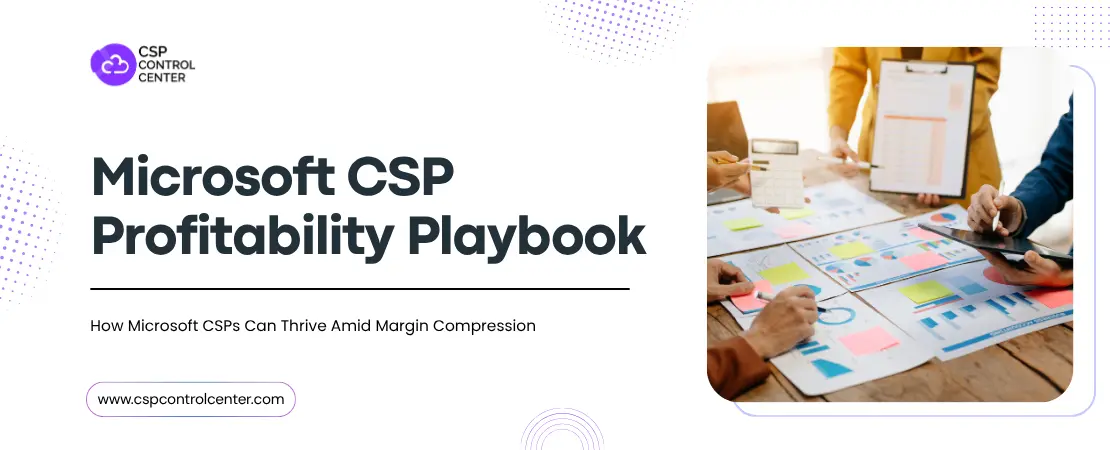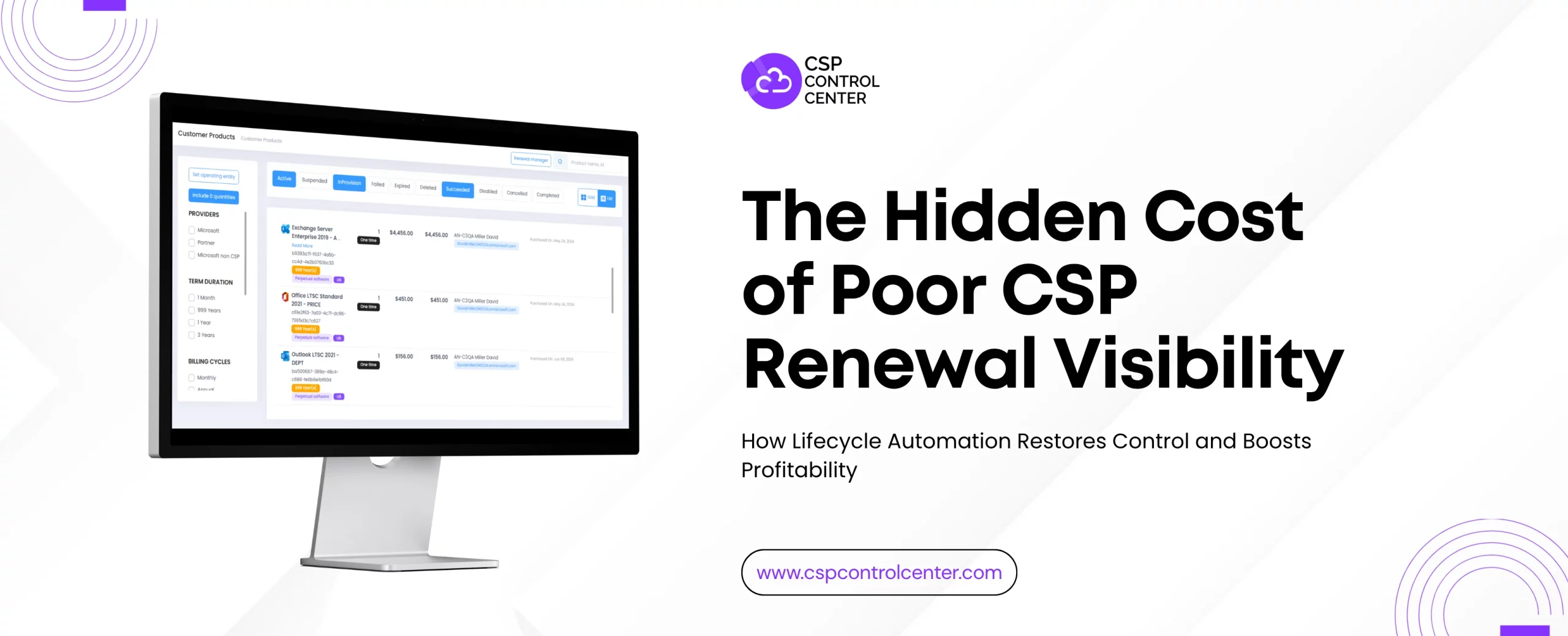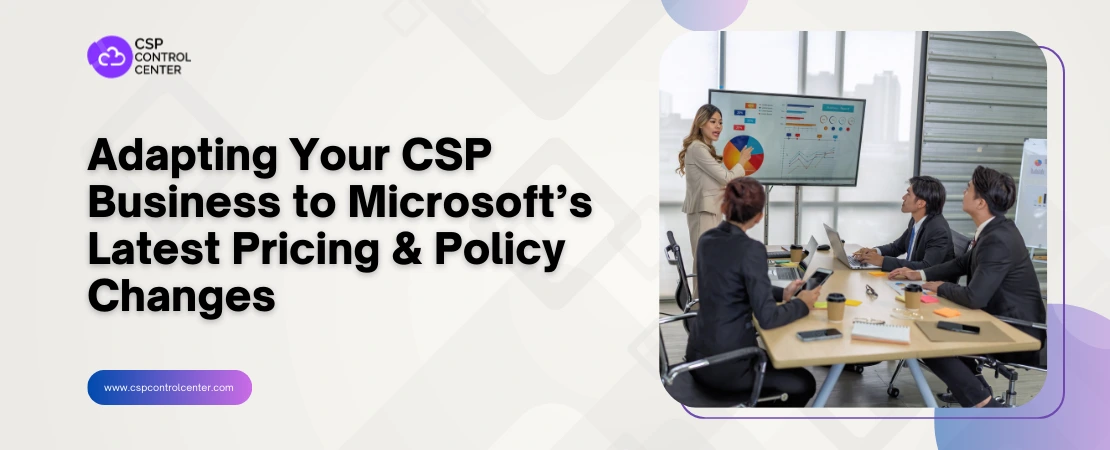The Microsoft Cloud Solution Provider (CSP) program has transformed how partners deliver cloud solutions. Through CSP, partners handle billing, support, and customer relationships, earning margins on licenses and incentives for value-added services. As a Microsoft CSP, you can build scalable, recurring-revenue businesses by offering Microsoft’s suite of products alongside your own managed services, opening a large number of growth opportunities in the past decade.
However, the Microsoft CSP landscape is evolving rapidly, putting pressure on profitability. Increasing competition, Microsoft’s global price adjustments, evolving customer expectations, and rising operational complexity have combined to make profit margins thinner than ever. Today, competing on price alone or relying solely on license resale is no longer enough.
As a Microsoft CSP, profitability strategies are now more critical than ever. The most successful CSPs are no longer those selling the most licenses, but those who operate efficiently, develop smarter revenue models, and use automation and analytics to drive better business outcomes.
This blog serves as your profitability playbook, providing strategies to sustain and grow profitability in the low-margin CSP economy. We will explore the causes of margin compression and why traditional approaches like such as relying heavily on license resale, manual billing, and limited-service differentiation, are not sustainable. The blog will also outline five actionable playbook strategies: diversifying revenue streams, optimizing operations through automation, adopting value-based pricing, leveraging data for optimization, and strengthening customer relationships.
Understanding Margin Compression in the CSP Landscape
Margin compression means your profit margins are shrinking because your revenue is not growing fast enough to cover rising costs, or the resale margins are small. In simple terms, it means you are working harder, managing more complexity, and serving more customers, yet making less profit per transaction. There are several causes of margin erosion:
- Microsoft Pricing Policy Shifts: Frequent updates to global pricing and incentive structures have reduced the flexibility CSPs once had in maintaining markups.
- Increased reseller competition: With more partners entering the CSP ecosystem, price-based competition has intensified, resulting in lower margins.
- Customer preference for value-added services: Businesses now expect bundled offerings, managed services, and ongoing support, but often at the same or lower prices.
- Rising operational costs: Growing expenses related to billing, customer management, and compliance further squeeze profitability.
- Operational inefficiencies and hidden costs: Manual processes, billing errors, and delayed renewals silently reduce profits over time.
Even a small 2–3% reduction in gross margin can impact profitability at scale, especially for Microsoft CSPs managing hundreds of customers and thousands of licenses.
Why traditional approaches no longer work:
- Volume-Only Growth is Unsustainable: Doubling the number of licenses sold, but operating at a near-zero or negative net margin due to high operational expenses simply increases workload and not profitability.
- Transactional Relationships Limit Value: A relationship focused only on the monthly license cost is easy for a competitor to steal with a slightly lower price.
- Manual Operations Don’t Scale: Business growth driven by adding staff to manage manual processes (billing, provisioning, support) quickly outpaces any incremental license revenue.
Playbook Strategy 1: Diversify Revenue Streams for Better CSP Profitability
Building profitability in today’s CSP landscape goes beyond reselling Microsoft licenses. To thrive, you need to expand how you earn by transforming your role from reseller to solution provider, broadening service portfolios, and developing niche expertise that customers truly value. In fact, as per the IDC Study 2024, “62% of total partner revenue comes from services.”
When you create multiple revenue streams around your core offerings, you build stability and long-term growth, even when resale margins fluctuate.
Move from Product Reseller to Solution Partner
Transactional reselling is no longer sustainable. Competing on price alone leaves little room for profitability, especially when Microsoft controls the base product cost. Transition from being a license reseller to becoming a solution provider who delivers complete value packages.
Building Value as a Solution Partner
- Create bundled offerings such as Microsoft 365 + Security + Managed Services to provide holistic value.
- Position yourself as a long-term technology partner who understands business outcomes, not just software provisioning.
- Focus on differentiating your services based on faster deployment, smoother adoption, and measurable productivity gains rather than on price.
Expand Your Service Portfolio
To maintain profitability, you must look beyond licenses and identify service areas that can generate consistent income. Add consulting, migration, and lifecycle management services to complement licensing revenue.
Key actions to take:
- Offer migration and deployment services for Microsoft 365, Azure, or Security workloads.
- Introduce tiered managed service plans that offer varying levels of monitoring, support, and reporting.
- Include training and user adoption programs to help customers get maximum value from Microsoft solutions. This not only created more value for customers but can also become a new revenue source.
A wider service portfolio not only increases your average revenue per customer (ARPU) but also strengthens retention by keeping customers engaged throughout their cloud journey.
Partner with ISVs for Complementary Solutions
Collaborating with Independent Software Vendors (ISVs) allows you to fill gaps in the Microsoft stack without having to build the technology yourself. You can extend your portfolio by offering integrated, industry-specific solutions that solve real business problems.
How to leverage ISV partnerships:
- Create bundled solutions: Combine Microsoft 365 or Azure with ISV tools that address specific business needs, such as compliance, backup, or process automation.
- Tailor offerings by industry: Use ISV integrations to design sector-specific packages for verticals like healthcare, finance, or manufacturing.
This helps in getting a higher deal value, better differentiation, and a stronger competitive edge. Learn more about ISV to Partner private offers here.
Niche Specialization and Vertical Focus
Developing deep expertise in a specific vertical, such as healthcare, finance, or manufacturing, or a solution area like Azure Data & AI or Security, allows you to deliver tailored value and command premium pricing. Invest in Microsoft Solutions Designations and Specializations to gain partner incentives, access reduced-cost SKUs, and build credibility with customers.
Why it works
- Specialized knowledge allows you to address industry-specific pain points and compliance needs.
- Customers view specialized CSPs as trusted advisors rather than interchangeable vendors. This not only reduces customer churn but also enables you to command premium pricing.
Instead of depending on thin resale margins, you begin generating recurring, high-value revenue streams across consulting, support, and lifecycle management
Playbook Strategy 2: Optimize Operational Efficiency Through Automation
Once revenue streams are diversified, the next step is to achieve operational excellence. Manual billing, reconciliation errors, and fragmented tools can quietly reduce margins. Automation allows you to streamline processes, eliminate leakage, and scale without proportionally increasing headcount.
Below are the key areas where automation delivers measurable impact.
Automate the Billing and Reconciliation Cycle
Manual billing is time-consuming, error-prone, and delays cash flow. Even a small error rate can lead to significant revenue leakage over time.
How to automate effectively
- Sync Microsoft Partner Center data automatically to ensure all subscriptions, license counts, and pricing changes are reflected in real time.
- Use a Microsoft CSP billing automation tool to provide customers with a single, transparent invoice for all services, both Microsoft and non-Microsoft, to improve trust and clarity.
- The Microsoft CSP billing automation tool can also be used to match usage, invoices, and payments automatically to identify revenue leakage and unpaid balances instantly.
Automating billing leads to lower operational overhead, faster billing cycles, and improved financial accuracy. Read our blog to learn more about why billing accuracy is vital for Microsoft CSPs.
Simplify Provisioning and License Management
Every manual step in provisioning, from license assignment to modification, adds complexity and cost. On top of that, missed or delayed renewals can lead to lost revenue and customer churn.
How to streamline operations
- Deploy and adjust licenses instantly from a centralized platform
- Enable real-time usage tracking to monitor consumption to right-size subscriptions and avoid over- or under-provisioning.
- Offer customers a self-service portal where they can add, remove, or manage licenses independently.
This leads to faster time-to-value for customers, reduced manual errors, and improved customer satisfaction.
Streamline Subscription and Renewal Management
Missed or delayed renewals, especially in the NCE model, can lead to lost revenue and customer churn. Automated lifecycle management helps maintain visibility across every customer subscription and ensures timely renewals.
How to implement
- Set up automated renewal alerts to track expiring subscriptions well in advance to prevent lapses.
- Automate license adjustments to modify plans or renewals based on usage or agreement changes.
- Send automated reminders or renewal quotes directly from your system.
Automating subscription and renewal management results in higher renewal visibility, better customer retention, and smoother cash flow.
Use Analytics to Identify Operational Bottlenecks
Automation generates the data that you need to make better business decisions. Tracking patterns across billing, renewals, and usage helps identify inefficiencies and improvement areas.
How to leverage analytics
- Track billing accuracy, ticket resolution time, and renewal conversion rates.
- Use dashboards to spot recurring issues or revenue leakage areas.
- Use data insights to refine workflows and reallocate resources strategically.
Playbook Strategy 3: Adopt Value-Based Pricing and Packaging Models
As margins tighten, you must rethink how you price and position your offerings. In a margin-sensitive environment, price alone cannot be the differentiator. Operating on a discount-based model can quickly reduce profitability. The more sustainable approach is to adopt value-based pricing where the price reflects the business impact, not just the product cost.
Move from Discount-Driven to Value-Based Pricing
If customers understand the value your solution is providing to their business, they are likely to pay more. Constant discounting diminishes perceived value and profitability.
How to implement value-centric pricing
- Define measurable value: Quantify how your services save time, reduce costs, or improve security for the customer.
- Align pricing with outcomes: Structure packages around tangible deliverables, for example, “security and compliance assurance” instead of “security add-on.”
- Communicate ROI clearly: Use data and case examples to show how your services translate into measurable business benefits.
This approach reduces price sensitivity, improves margins, and makes the perceived value higher.
Introduce Tiered Service Offerings
By creating tiered service bundles, you segment your customers based on their budget and needs. This provides flexibility to customers as well as allows you to capture a larger market share.
How to design tiered bundles
- Design different service tiers with varying levels of support, analytics, and automation.
- Package around customer outcomes, for instance, combine Microsoft 365, security, and backup into “Productivity Plus,” “Secure Cloud,” and “Managed Enterprise” bundles.
- Integrate ISV tools or managed services that enhance customer retention and justify higher price points.
This differentiates your business and encourages customers to upgrade for better value.
Create Bundled Solutions That Deliver Complete Value
Selling standalone licenses will not drive long-term growth or customer retention. To stay profitable, you must move beyond simple reselling and deliver complete, outcome-driven solutions that address real business needs.
How to implement bundled solutions
- Combine Microsoft services and value-adds: Package Microsoft 365, Azure, and Security with managed support, compliance advisory, or user training.
- Offer industry-specific bundles- Create offerings like a Healthcare Cloud Suite for compliance-heavy sectors or a Secure Remote Work Bundle for remote teams.
Bundled solutions make buying decisions easier, deepen customer trust, and increase average revenue per customer (ARPU).
Use Automation to Support Complex Pricing Models
Manually managing pricing for bundled offerings or tiered models can become unsustainable. As your customer base expands, spreadsheets cannot handle the complexity of dynamic pricing, renewals, and discounts.
How to streamline complex pricing with automation
- Implement automated billing and quoting systems: Manage custom pricing, bundles, renewals, and usage-based billing seamlessly.
- Integrate systems for accuracy: Connect billing, CRM, and Partner Center data to ensure consistent pricing across all customer touchpoints.
Automated pricing and billing systems ensure consistency and improve cash flow visibility.
Playbook Strategy 4: Leverage Data and Analytics for Profit Optimization
Profitability is not a one-time achievement. You have to continuously monitor, refine, and adapt your business strategies to sustain them in a fast-changing cloud ecosystem. You might be losing margins if you lack insight into where profits are made or lost. Data and analytics can be used to make smarter, faster decisions that continuously improve financial performance.
Identify and Track Key Profitability Metrics
To manage profitability, you must first measure it accurately. Tracking the right financial and operational indicators will tell you where you can improve efficiency and have revenue opportunities.
Key metrics to monitor
- Gross Margin per Customer or SKU: Understand which customers, solutions, or bundles deliver the highest returns.
- License Utilization Rate: Identify underused or over-provisioned subscriptions that eat into your profits.
- Billing Accuracy Percentage: Measure how precisely your billing systems reflect actual usage and pricing.
- Renewal and Churn Rates: Evaluate how effectively you retain customers and maintain steady recurring revenue over time.
With transparency in data, you can uncover hidden costs, refine pricing, and focus investment on the most profitable customers and offerings.
Use Analytics to Drive Smarter Decisions
If you are not using analytics, most of your decisions will be reactive, not strategic.
How to Apply Data-Driven Decision-Making
- Bring together data from billing systems, customer accounts, and usage reports into a single dashboard. This gives a complete view of performance across products, subscriptions, and partner channels.
- Segment customers by usage, spend, and service type to pinpoint high-margin opportunities or detect recurring problem areas such as over-discounting or low utilization.
- Compare sales and renewal performance across different teams or geographies. Use these insights to recognize efficiency, address training gaps, and align incentives with profitability goals.
- Review performance data for bundles, promotional offers, and pricing tiers. Use these insights to adjust your strategy, eliminate low-yield offerings, and strengthen high-performing ones.
Using data, you can make proactive, confident decisions that directly influence profitability. With real-time insights into margins, customer behavior, and consumption trends, you can fine-tune pricing, optimize offers, and eliminate inefficiencies.
Predict and Prevent Revenue Leaks
Missed renewals, incorrect pricing, or unused licenses can result in revenue leaks. Predictive analytics can help you spot these issues early and act before they affect the bottom line.
How to use predictive analytics effectively
- Detect anomalies in usage or billing patterns: Identify unusual consumption spikes or drops.
- Forecast renewals: Use predictive models to flag customers at risk of non-renewal.
- Model profitability scenarios: Test how pricing or discount changes will affect margins.
Preventing revenue leakage keeps your existing profits safe and supports business growth.
Playbook Strategy 5: Strengthen Customer Retention and Lifetime Value
One of the most reliable ways to protect and grow profitability is to build and nurture long-term, high-value customer relationships. Long-term customers contribute recurring revenue, advocate for your services, and are more open to cross-sell and upsell opportunities.
Prioritize Retention Over Acquisition
Retaining an existing customer is significantly more cost-effective than acquiring a new one. According to a study by Harvard Business Review, “acquiring a new customer can cost 5x more than retaining an existing one.” When you focus on renewals and proactive relationship management, you often see more predictable and profitable growth.
How to do it
- Monitor renewal timelines closely using automation tools.
- Use analytics to identify at-risk customers early and reach out to them with special offers
- Offer incentives for multi-year commitments or bundled renewals.
This leads to stronger renewal rates, reduced churn, and predictable recurring revenue.
Build a Proactive Customer Success Framework
Moving from reactive support to proactive engagement helps ensure customers continue to realize value from your solutions.
Key initiatives you can take
- Assign customer success managers or automate touchpoints for regular value check-ins.
- Conduct quarterly business reviews highlighting usage insights and optimization opportunities.
- Set automated reminders for training sessions, adoption goals, or new feature rollouts.
As a result, customers feel supported and continuously see value in your partnership.
Empower Customers with Self-Service Tools
When your customers are not dependent on manual support for every small thing, you can deliver services faster and optimize internal resources.
You can achieve this by
- Deploying self-service portals where customers can manage licenses, check usage, and raise tickets.
- Integrating AI chatbots to handle common support issues 24/7.
This enhances customer control and satisfaction while reducing operational effort.
Deliver Personalization at Scale
Customers expect personalization that goes beyond basic communication. According to Salesforce, “73% of customers expect better personalization as technology advances.” Use customer data to tailor communications, recommendations, and upgrades. The solutions you suggest should reflect their specific goals, challenges, and stage in the cloud journey.
Focus on
- Segmenting customers based on factors like industry, organization size, usage behavior, or maturity level.
- Recommending relevant bundles, managed services, or add-ons that directly address their operational or compliance challenges.
- Using automation tools to deliver timely insights, renewal reminders, or upgrade suggestions aligned with customer goals.
With personalization, you can improve customer engagement, have higher upsell and cross-sell rates, and long-term loyalty.
In today’s evolving CSP landscape, profitability depends on more than just volume. By diversifying revenue, automating operations, adopting smarter pricing, leveraging data, and deepening customer relationships, you can build a resilient and scalable business model.
Build a smarter, more profitable CSP business with C3
Is your CSP business struggling with manual billing, complex renewals, or shrinking margins? If yes, then you need to automate profitability. CSP Control Center (C3) can help streamline Microsoft CSP billing, subscription management, and NCE renewals with end-to-end automation and customer self-service capabilities.
Ready to protect your Microsoft CSP margins?
Book a personalized demo of CSP Control Center (C3), the automation platform that helps Microsoft CSPs eliminate billing errors, simplify renewals, and maximize profitability.

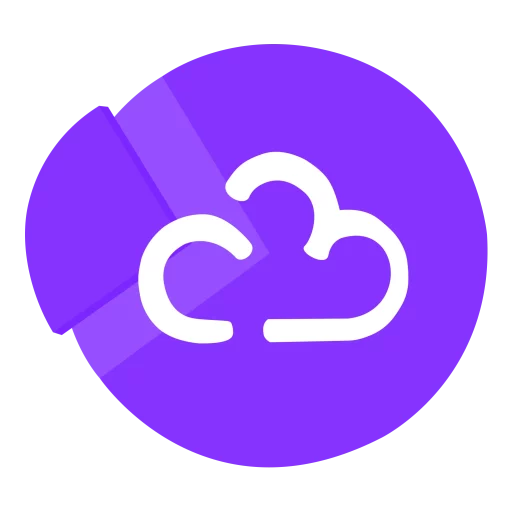 CSP Control Center
CSP Control Center
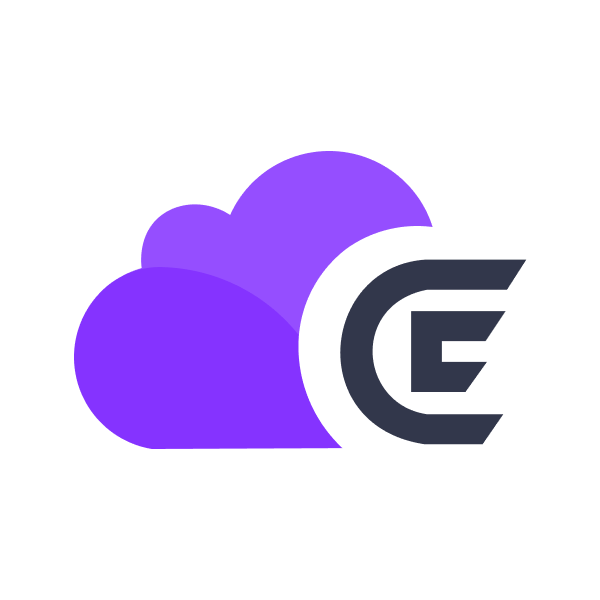 CloudEvents
CloudEvents
